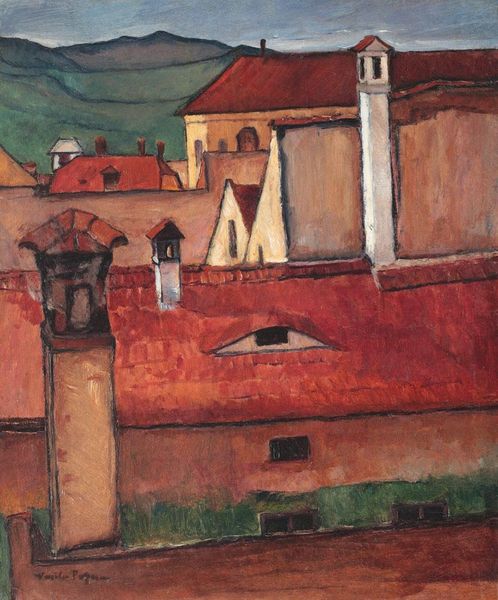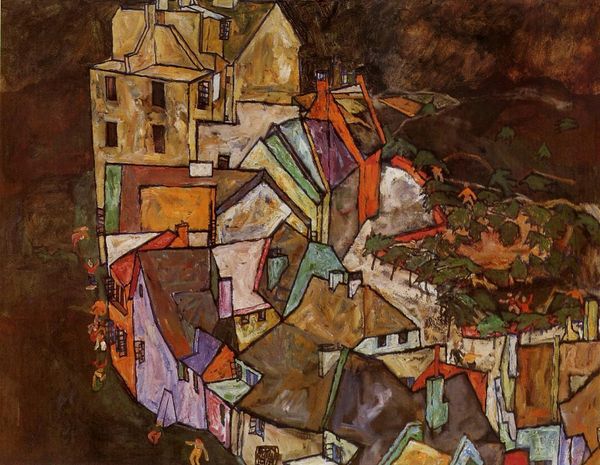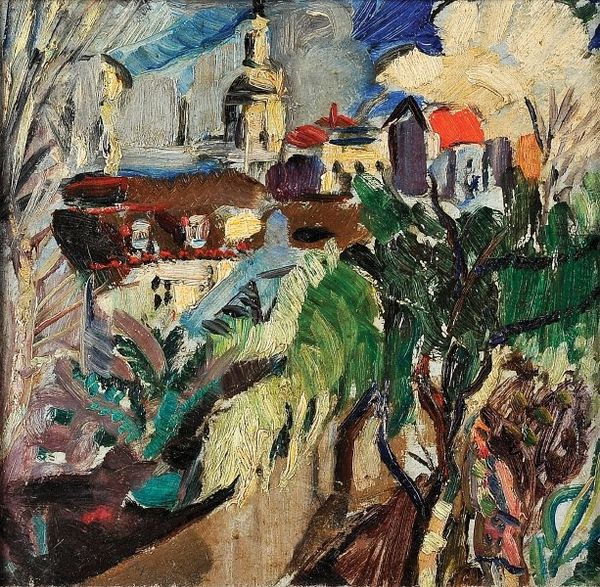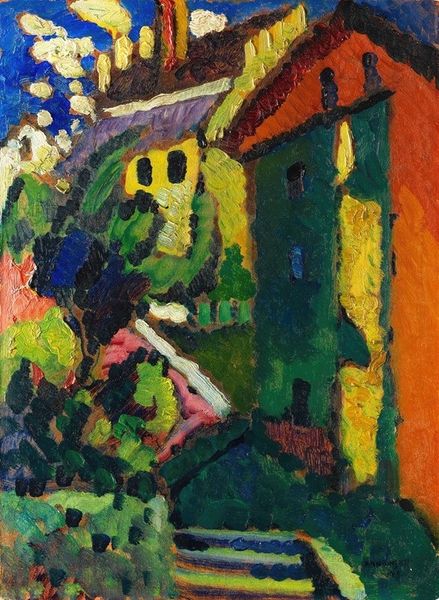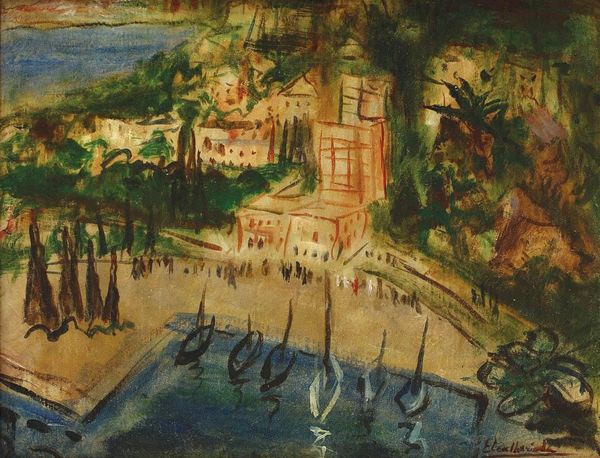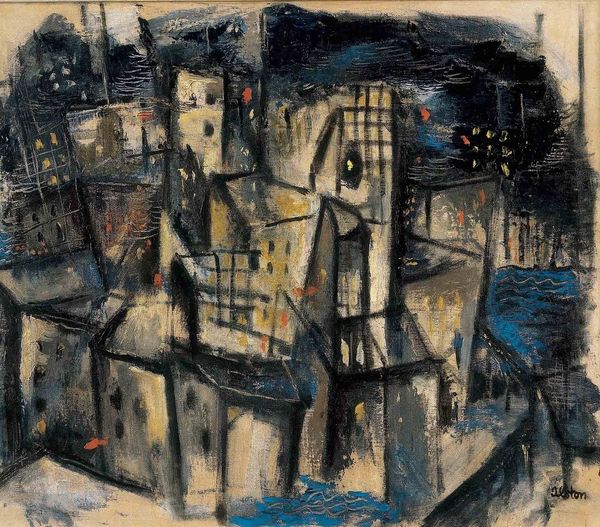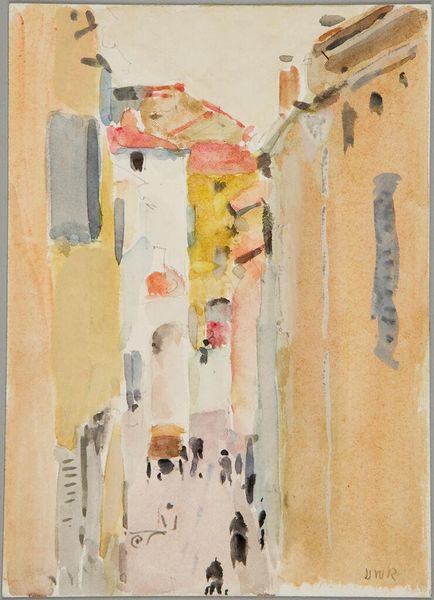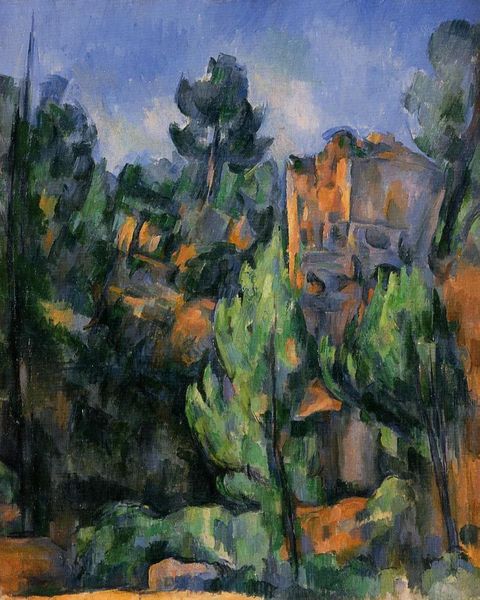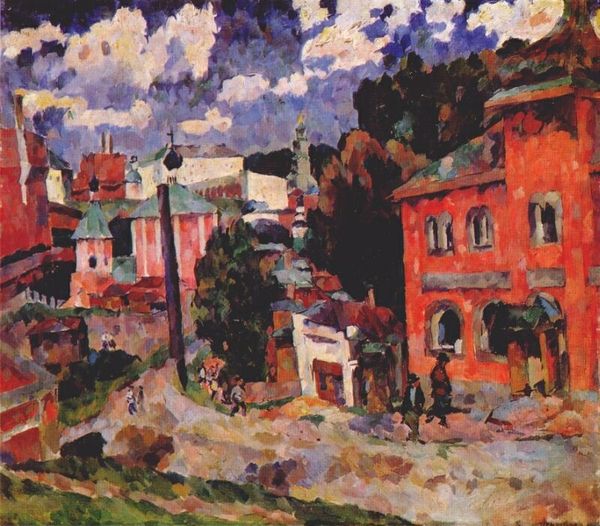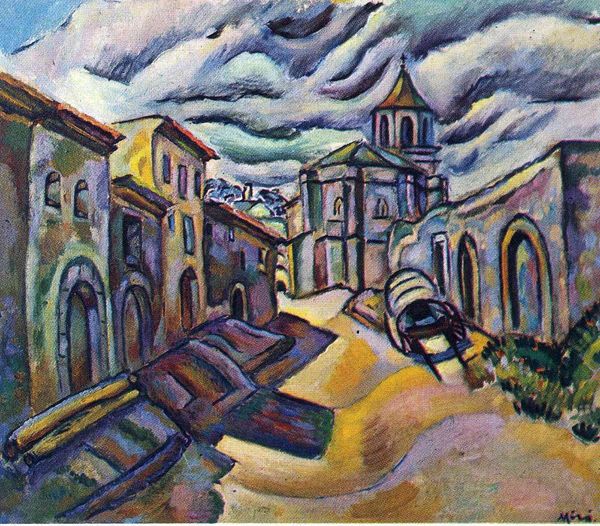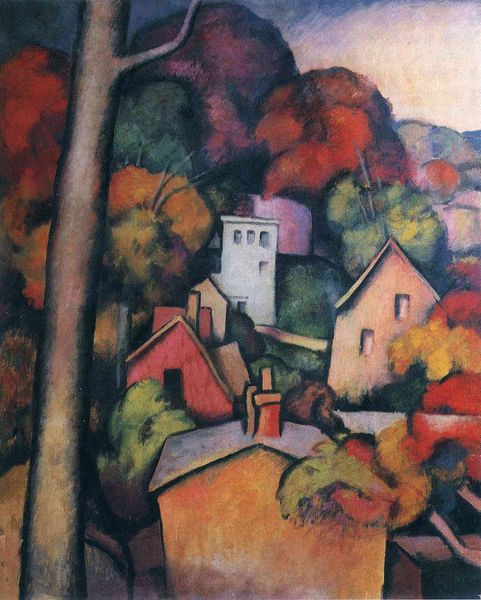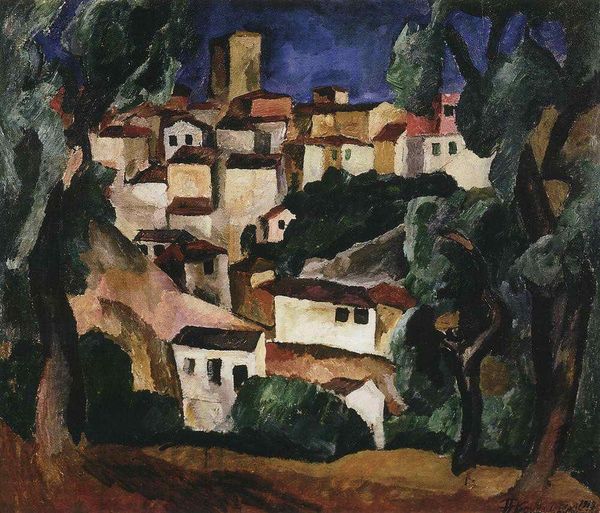
Copyright: Gustave Buchet,Fair Use
Gustave Buchet's painting, Hafenstadt, presents a scene dominated by cubic architectural forms rendered in a muted palette. The buildings are rendered as stacked geometrical shapes, their rigidity softened by the play of light and shadow. The surface is visibly worked, the thick impasto adding a tactile dimension that invites the viewer's gaze to linger. Buchet seems to probe the boundaries between representation and abstraction. The simplification of form evokes a tension between the objective reality of the harbor and a subjective interpretation of space and volume. This deliberate use of geometry, combined with the subdued coloration, lends the composition a formal structure that is at once rational and expressive. Consider how the color, though restrained, contributes to the painting's overall mood. It is a testament to Buchet's engagement with structural clarity. This is not just an aesthetic choice but a deliberate exploration of how form shapes our understanding of space and structure.
Comments
No comments
Be the first to comment and join the conversation on the ultimate creative platform.


